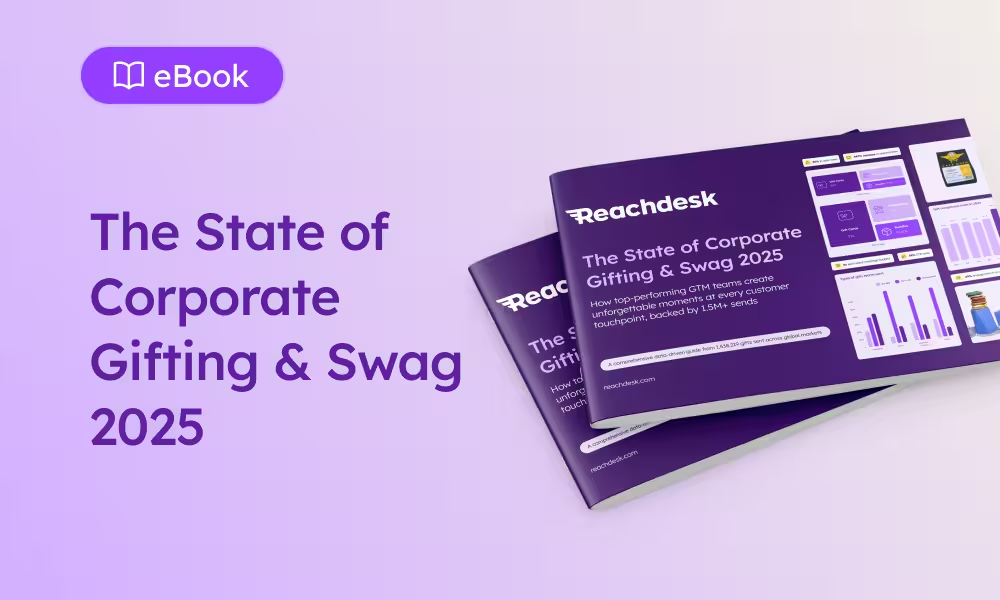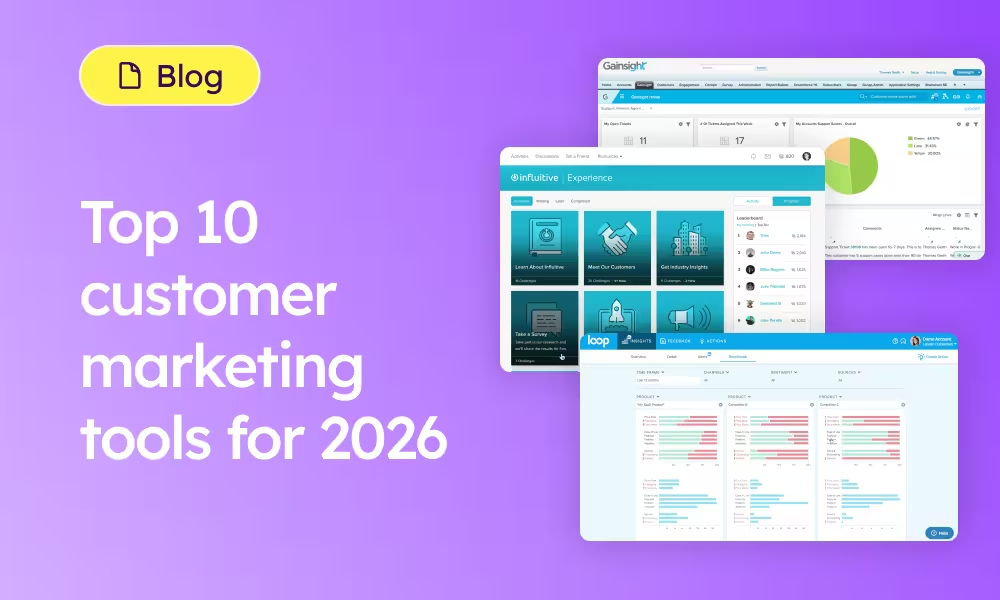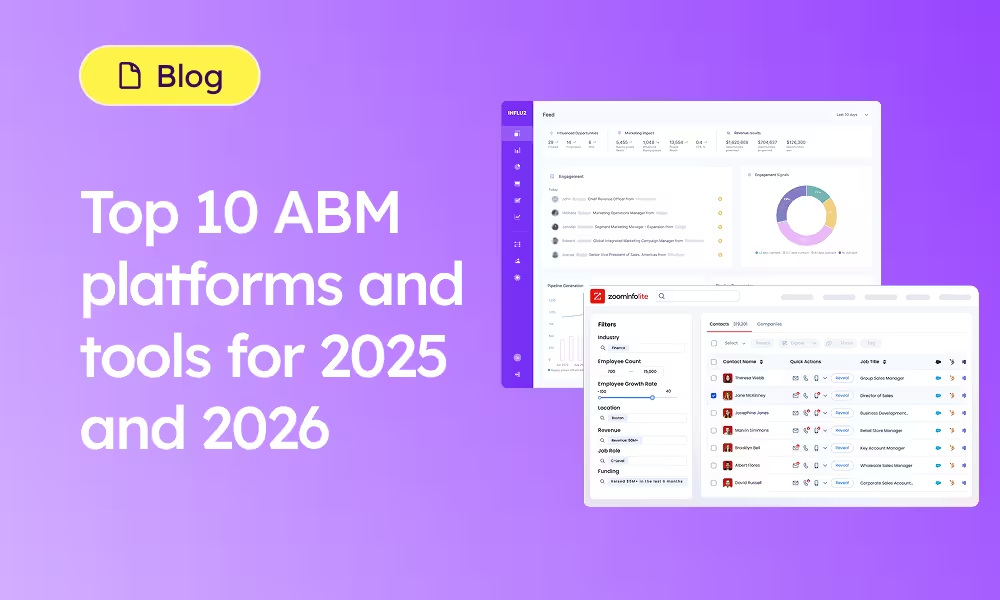One powerful platform for ROI-driven corporate gifting, swag, and engagement at scale.
Are you struggling to connect with customers? Are your inbound and outbound teams fatigued? Sounds like your go-to-market (GTM) strategy might need to go-to-hospital. The good news is you’re not alone.
Today’s economic climate is a ruthless one for sales and marketing. Budgets are being slashed across all industries, which means GTM teams are expected to deliver projects with maximum efficiency while using minimal resources.
This is a sensible road to take, but the truth is you’re likely to bump into your target audience along the way. After all, they’re experiencing the exact same market conditions as your company.
The spray-and-pray tactics of yesteryear feel about as relevant as a flip phone. B2B buyers and decision makers are not as responsive as they once were, with emails, outreach, and LinkedIn messages now often yielding nothing more than crickets and tumbleweeds.
Even if you break through and manage to start a conversation, cautious CFOs are now overseeing every purchase, and can halt a sales process before you’ve even had a discovery call.
The “doing more with less” mantra is admirable in theory – but in practice, it has the potential to stretch GTM teams beyond their capacity and drive them towards burnout.
But what if there was a fresh and empowering mantra for sales and marketing? Well, we’ve got it, so repeat after us: allbound engagement.
Let us show you how allbound engagement can bring together your demand generation, account-based marketing (ABM), sales, partnerships, growth, revenue operations and customer success teams under one motion – remedying underperformance and promoting a healthier customer experience!
All aboard allbound engagement
Today’s B2B buyers expect an outstanding customer experience at every touchpoint. They value a seamless and supportive buyer journey as much as the product or service you offer.
Meeting these expectations is a tall task – and the ever-growing pressure to do so may be creating cracks in your GTM strategy.
A perfect storm of siloed teams, unsatisfying customer experiences, disrupted processes, reactive (rather than proactive) strategies, and a crowded digital marketplace is leading to low pipeline and increased customer churn, not to mention sapping precious time, energy, motivation, and resources from your teams.
Allbound engagement reimagines the inbound and outbound functions as one powerful machine working towards shared revenue goals. All of these teams are bound to the same mission and targets – so it makes sense to find a way to not only align their workflows, but to tie them together in what we call the allbound engagement bowtie…

We’re living, marketing, and selling in a customer’s world. Allbound engagement offers a new way to thrive within it by engaging prospects and customers using gifting, direct mail, virtual experiences, event packs, and swag. The key ingredients are data and personalization. In order to succeed, you need to know when to engage, how to personalize, and what to follow up with.
Why is your GTM strategy under the weather?
Here are some of the common ailments affecting today’s inbound and outbound teams…
1. Digital noise
Every day, B2B buyers are bombarded with hundreds of emails and ads. That’s upwards of 121 emails and 6,000-10,000 ads every day, to be exact. It's overstimulating and exhausting for B2B buyers.
Both digital and in-person events have become generic and easily forgettable – and the level of competition grows by the day. All of this means we have to do more to create a connection and drive engagement.
How allbound engagement can help
Now is the time to disrupt the status quo of B2B outreach by making personalized and memorable experiences a priority. This is one of the most reliable ways to ensure your brand turns heads and commands attention.
Even in the midst of a volatile economy where every penny counts, many business leaders see the value in personalization and are doubling down on their efforts, with nearly 69% increasing their investment in personalization.
This goes way beyond addressing someone by their name in your email outreach. True personalization comes from going the extra mile and researching the challenges the prospect or customer is facing and the goals they have.
Whether that insight comes from a marketing intelligence platform or from the research your BDRs are doing, it should be at the heart of your messaging to demonstrate that you take the recipient’s challenges seriously. Inserting references to personal hobbies, interests or likes can be highly impressive. If that includes a specially chosen gift that’s relevant to these, even better!
2. Teams working in silos
87% of sales and marketing leaders say collaboration between sales and marketing enables critical business growth – but a whopping 90% of sales and marketing professionals say they have challenges with alignment.
Your GTM team faces the growing pressure of market conditions and the challenges of stretched budgets and resources. Without leveraging a strategy that brings your entire GTM team together behind a shared goal, you face high risks of falling short of your business goals and burning you and your team out.
How allbound engagement can help
Allbound engagement, by design, is a methodology that activates your entire GTM team – driving alignment between demand generation, account-based marketing (ABM), sales, partnerships, growth, customer success, and revenue operations.
Unifying your teams allows information to flow both from the top down and from the bottom up so that everyone involved has a complete picture of the goals you’re trying to achieve and the obstacles you have to overcome.
This promotes a fully transparent workflow, where every team member can understand their contribution and the role they have to play in creating and delivering experiences that customers love and competitors envy.
Here are the different teams that allbound engagement brings together:
Senior sales, marketing and customer success leaders
As the driving force behind the strategy, these leaders will make sure your strategy is informed by high-level business goals, such as revenue and pipeline targets, and that everyone involved understands how that translates into their day-to-day workload.
Marketing team
This team will be executing a lot of your allbound engagement strategy and tasked with educating internally on what the strategy entails and managing the day-to-day of running your campaigns.
Business development representatives
BDRs are often the first point of contact for your potential customers, so in order to deliver a consistently amazing experience, it’s essential their outreach and process is synchronized with every subsequent step of the customer’s journey.
Business development leaders
These leaders, such as BDR managers, will be integral to making sure senior leadership understands the challenges their teams are facing and that those challenges are reflected in their strategic decisions.
Customer success managers
These managers are your GTM team's direct connection to customers and are responsible for passing valuable customer insights and feedback to the rest of the team that will inform your allbound engagement strategy – from your customer’s current challenges and blockers, to questions about your product and services.
Account executives
These have a crucial role to play in welcoming new customers and ensuring a smooth transition for the customer success team. They should be able to communicate the problems a new customer is looking to solve and the goals they want to achieve to customer success managers in order to ensure customers are off to the best possible start.
Account managers
Ideally, account managers will be working alongside customer success managers to monitor the health of the customer’s account and identify opportunities for growth and cross-sell. The more engaged you are with the customer, the more opportunities and connections you will be able to spot.
Partnership marketing
Whether you have a designated partnerships team or an individual who is responsible for driving revenue from partnerships, their role is to amplify the effectiveness of an allbound strategy by creating joint value propositions with strategic partners and leveraging each other’s strengths and brand recognition.
Revenue operations
Allbound engagement works best when it’s based on solid data and RevOps can provide the most accurate and timely insights on trends in the market, opportunities for improving your sales and marketing process, and reporting on revenue goals.
3. Unsatisfying customer experiences
If you don’t provide memorable customer experiences and consistent support, you risk blending into the background – creating a negative experience and letting your customer forget why they purchased your product or service in the first place (say hello to churn).
How allbound engagement can help
Bringing all your entire GTM team together and aligning their workflow will provide a 360° overview of your buyer journey. This will enable the entire team to easily see at a glance which stages might be less engaging or satisfying for customers than others.
Important factors to understand include each team’s contribution to pipeline, the average deal size for sales and marketing, and how many opportunities were born from collaborative efforts between sales and marketing. Take the opportunity to gather a range of perspectives and suggestions for improvements, before assigning action points to the relevant team members.
One of the main goals of your allbound engagement strategy will be to accelerate your sales processes. A key metric to watch is pipeline velocity, which measures the speed at which opportunities move through the stages of a sales pipeline. Start by asking questions such as:
- How many qualified opportunities do you generate?
- What is your win rate?
- What is your average deal value?
- What is the average sales cycle length?
Knowing your pipeline velocity helps you increase the revenue flow into your business every day and allows you to make timely adjustments.
Finally, allbound engagement gives you the opportunity to execute highly personalized communications throughout the entire customer lifecycle.
Keep customers feeling engaged and appreciated by rewarding them for completing milestones, such as anniversaries or using a product feature for the first time. Gamifying the onboarding process with celebratory messages and special gifts is a powerful way to drive adoption and help customers to hit the ground running.
Providing thoughtful and nurturing experiences doesn’t just encourage customer loyalty – it can also lead to increased advocacy. In a world where 88% of people trust word-of-mouth recommendations from those they know, mapping out a long-term plan to take care of your customers pays dividends.
If you just had an “aha!” moment and feel like your GTM team may be in need of a first aid kit, download our new playbook to learn more about allbound engagement, the many challenges it can solve, how to measure success, and much more!






.jpeg)



